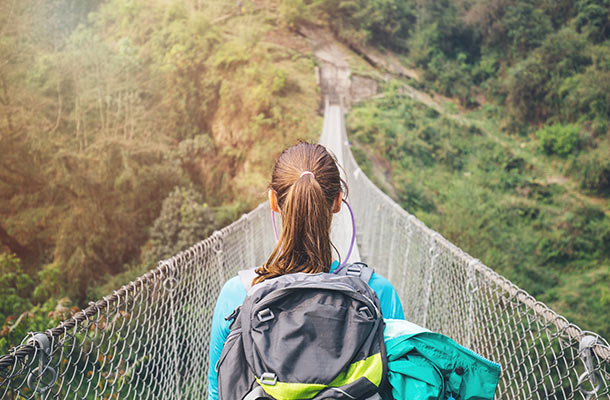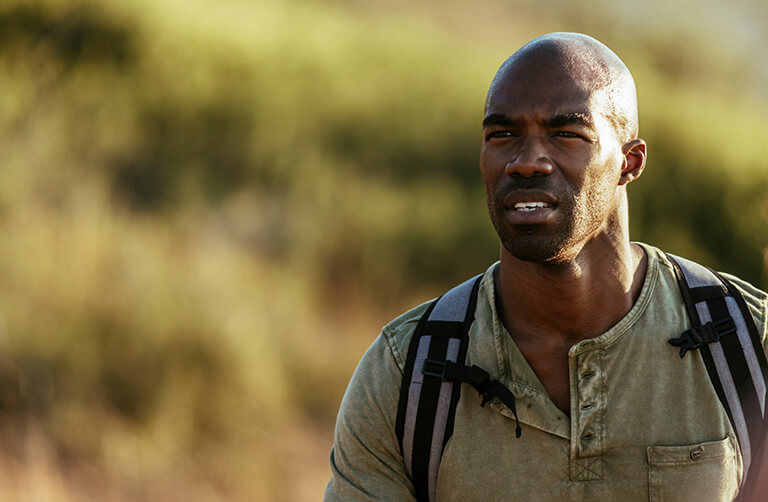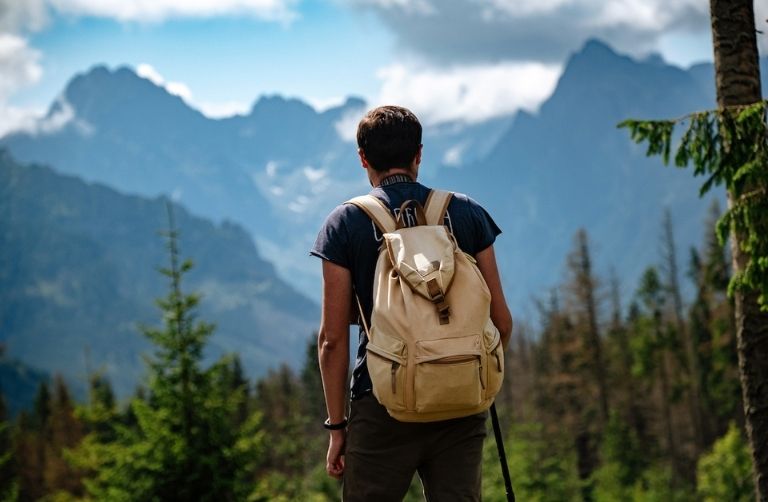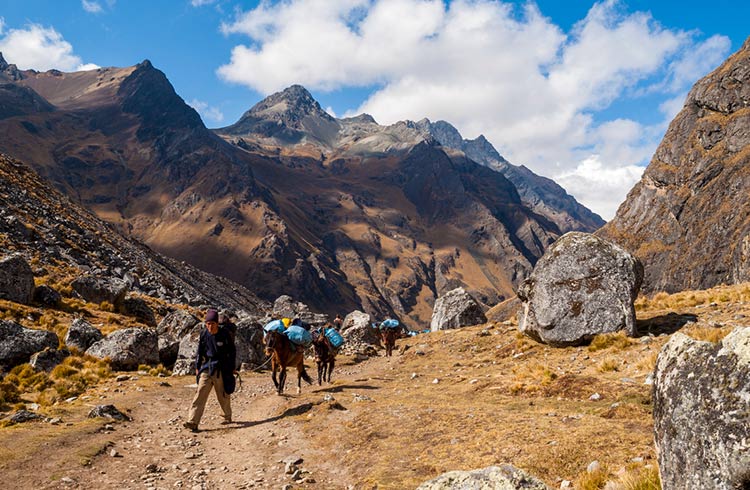The Essential Nepal Packing List: What to Bring for Your Trek
Here's what you need to pack for the ultimate adventure in Nepal, from layering and sleeping bags to the best hiking boots. Nomad Maria shares her trekking-gear tips.
 Photo © iStock/Popartic
Photo © iStock/Popartic
- Clothes for hiking
- Packing the right shoes for a trek below 6,000m
- Sleeping bags
- Backpacks and important accessories
- What to pack vs what to buy there
Clothes for hiking in Nepal
You should only take essential items. Remember to pack light, and follow these key steps:
- You’ll need layers. Your base layer should be a synthetic T-shirt, or a quick-dry, thin thermal shirt. If you’re sensitive to the sun, wear long sleeves – the sun can be very strong at higher elevations.
- Pack clothes that are light, with fast drying fabric and good breathability.
- Wear comfortable shoes – preferably ones that you’ve already worn in.
- Bring a hat and sunglasses to protect you from the sun.
- Don’t forget the small things: gloves, a fleece hat, sun cream and a microfiber towel.
If you’re reaching higher altitudes, you’ll need more layers. Bring thermal shorts or trousers, a fleece jacket, and a light down jacket with a hood or down vest.
The outer layer is very important and has to be wind and waterproof. A light membrane or soft shell jacket with a hood is your best option.
When hiking or trekking below 3,500m, wear light, quick-dry trekking trousers and a T-shirt. Be prepared to put on more layers like windproof jacket and trousers when the sun goes behind the clouds or as it gets windy.
Temperatures will drop below freezing in the mountains, even at the altitude of 3,500m, so make sure always have a second (or third!) layer with you.
Packing the right shoes for a trek below 6,000m
Treks above 6,000m may require technical equipment, and many travel insurance companies won't cover such treks. If you are trekking below 6,000m, you’ve got three opinions for footwear. Whatever shoes you decide to use for trekking, make sure that the sole is not slippery, and has good grip on the rocks.
Mid/high trekking boots
Mid/high trekking boots will provide great ankle support. Get a pair with a steel cap and a solid, non-flexible sole.
Make sure these are the right size for your foot, and are comfortable to walk in. Remember, you’ll be walking in these for 4-8 hours a day during your trek.
Sky running trainers
Some people say hiking in heavy shoes that keep your ankle stable aren’t very good, as the body loses the knowledge of keeping balance on its own.
They recommend using lighter and softer shoes or trainers for sky running.
If you choose to wear these, you’ll need ankle support in the form of special bandages.
Light trainers or sandals
When you come to a lodge to stay overnight, you’ll definitely want to take your shoes off and to give your tired feet some rest.
So, you should also bring a pair of light trainers or sandals (closed-toe is best) and let your boots dry overnight.
Sleeping bags
Trekkers who choose to take the teahouse trek route and sleep in lodges can easily survive without a sleeping bag. Most of these lodges will provide warm blankets.
However, your own can be beneficial, because:
- It's more hygienic.
- The lodge may be short of blankets during the high season.
- At night when the temperature drops in the mountains, you might want to use both your sleeping bag and a blanket.
Backpacks and important accessories
If you hire a porter, a 30-40L backpack will be enough for you to pack your jacket, snacks, documents, thermos, and a bottle of water.
If you plan to carry everything and don’t want to use a porter, you’ll need a bigger backpack.
Find a backpack that will ergonomically distribute the load. It should have a solid frame and waterproof material to keep your back and belongings dry.
Trekking poles will also come in handy, and provide great protection for your knees when you’re walking up and downhill.
What to pack vs what to buy there
Hundreds of trekking shops in Kathmandu and Pokhara will be happy to equip you with all the necessary gear, so don’t worry if you arrive unequipped.
However, the products you buy in Nepal are made locally and won’t last forever – it‘s likely that you’ll leave most of them there after your trek.
There are a number of outdoor clothing shops on Tridevi Marg in Kathmandu where you can purchase the real-deal, top-quality branded gear, including fleece and GoreTex jackets, down jackets, and shirts.
I’d highly recommend you to buy your trekking shoes well in advance and choose a trusted brand, and start breaking in your shoes for some time before coming to Nepal!
Related articles
Simple and flexible travel insurance
You can buy at home or while traveling, and claim online from anywhere in the world. With 150+ adventure activities covered and 24/7 emergency assistance.
Get a quote


1 Comment
Good to know about Nepal. Thanks for sharing.
You can bring duffle bags for safari.